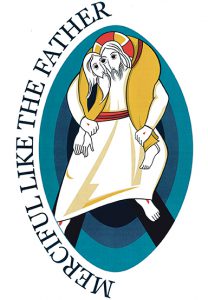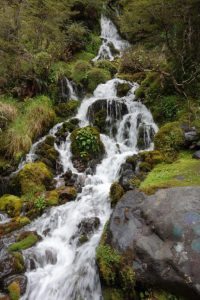 September 2016
September 2016
Te Tau Tapu o te Atawahi – He hoatu inu ki te hunga hia-inu
‘…but no one who drinks the water that I shall give will ever be thirsty again: the water that I shall give will become a spring of water within, welling up for eternal life.’ John 4: 14
‘As the deer pants for the water brooks, So my soul pants for You, O God. My soul thirsts for God, for the living God; When shall I come and appear before God?’ Psalm 42:1-2
Give drink to the Thirsty
In a land where there is no shortage of water, give attention to the thirst for truth. Speak honestly and respectfully. There is also thirst for justice. Ensure your dealings with others are always fair; update yourself on the Church’s social justice teaching and quench your own thirst with involvement in issues relating to justice and peace.
I Thirst, I Drown
Peter Healy sm
At this time in history Catholics are encouraged to reflect, judge and act ecologically. This encouragement is a call to conversion. The invitation involves transforming disconnected thinking into something more holistic and complete. The recent Encyclical Laudato Si’ reminded us over and again that everything is connected. Such a vision is an integral ecology of one planet and one interconnected system of systems, that is a relational whole. The precious waters of Earth are a relational whole. In the form of oceans, ice, vapour, rivers and lakes they are essentially one watery system.
An example of this oneness was in the world news recently. July 2016 is on the record as the hottest month ever recorded. In the Middle East – Kuwait in particular – temperatures soared to 54 degrees celsius. In this heat everything thirsts, everything dries up immediately, only extremophiles (heat loving organisms) survive this blistering heat. Evaporation here is instantaneous, the vapour goes up and off somewhere else on the planet. In this case it went up and off to China where torrential rain caused great floods on the Yangtze River. So, one place thirsts and another drowns. What happened in Kuwait is connected to what happened in China. Climate scientists call these excesses, extreme weather events. As we alter Earth’s atmosphere with our industrial economies, we can expect more of these extremes in every nation on Earth.
When a person, plant or place thirsts a state of stress begins, if the thirsting goes on for long enough the stress becomes distress, if the distress endures death occurs. There are watery places on Earth now called dead zones. These are river mouths, so contaminated that they are essentially lifeless.
Industrial agribusiness is now the norm in many places in Aotearoa-New Zealand. Where once there were small-scale family farms we now find industrial-scale agriculture. Large herds of dairy cows put stress on our waterways both in the form of irrigation needs and effluent. Even where I live in Ōtaki, more effort needs to go into the planting of dairy-farm creeks and streams (riparian revegetation). Stock in our high country too, with easy access to mountain rivers and lakes, continues to be a contamination issue.
Carefully fenced and planted waterways both look appealing and become long-term investments in the health of waterways. Such planting increases biological diversity and can bring balance into systems suffering the imbalance of pollution.
It seems that the contamination of the Havelock North water supply has more to do with upstream watershed management practices than anything else? The answer to healthy potable water in cities and towns lies not in the downstream addition of ‘purifying’ chemicals, rather it lies in upstream ecologies of care.
A unique part of an integral ecology in Aotearoa-New Zealand, involves consultation with iwi Māori. In this consultation process it’s possible to come to an appreciation of guardianship – kaitiakitanga. Done as a matter of course, this consultation would avert many of the current impasses facing people, land and waterways. A clarion cry from iwi all around Aotearoa-New Zealand is: ‘Talk to us, participate in the relationship that is the substance and spirit of Te Tiriti o Waitangi’.
No-one wants to thirst to the point of distress or to drown. We only need clean potable water, enough for today, for our children and their children.
Waters of Salvation History
Fr Patrick Bridgman
During a baptism, if children are asked, ‘What do we use water for each week?’ very quickly hands will go up and two responses will come: ‘To wash with!’; ‘To drink so that we live!’
In Salvation History water has a central place as witnessed in the prayer over the font before a baptism: the Spirit came upon the waters of creation; the divided waters through which Israel was led to freedom; the cleansing waters of the great flood; the waters of Jesus’ baptism; the waters that flowed from the side of Christ as he hung upon the cross; becoming the wellspring of sacramental life.
As the baptismal ritual proclaims, it is through dying in the waters of baptism that we rise to newness of life! By immersion in water we become Priests, Prophets, and Shepherds proclaiming the Reign of God to the world. And in our dying to self in these waters of baptism, we come to recognise the thirst we have in our Christian living; the thirst for God, the thirst for mercy and justice, the thirst for peace and right relationship.
